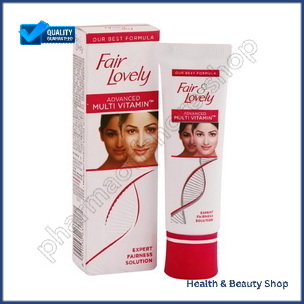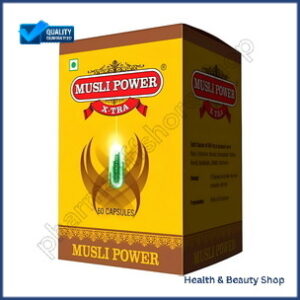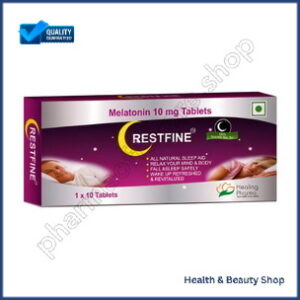ADDICTION
ALCOHOL DEPENDENCE
QUIT SMOKING
ALLERGY
ANTI FUNGAL
FUNGAL INFECTION
FUNGAL NAIL INFECTIONS
ANTI-REJECTION DRUGS
ANTI WORM
ANTIBIOTIC
BACTERIAL INFECTIONS
ARTHRITIS
GOUT
OSTEOARTHRITIS
RHEUMATOID ARTHRITIS
BLOOD
LOW PLATELET COUNT
THROMBOPHLEBITIS
VARICOSE VEINS
COLON
ANAL FISSURE
PILES
ULCERATIVE COLITIS
DIABETES CARE
DIABETES INSIPIDUS
DIABETES TYPE
DIABETIC FOOT ULCERS
GLUCOSE MONITOR
EYES/EAR CARE
DRY EYES
EYE CARE
EYE EXAMINATION
EYE INFECTION
EYE LASHES
EYE PAIN
GLAUCOMA
OCULAR HYPERTENSION
UVEITIS
FEVER CARE
MALARIA
RHEUMATIC FEVER
TYPHOID FEVER
GASTROINTESTINAL
ACIDITY
CONSTIPATION
CROHN'S DISEASE
DIARRHOEA
GALLBLADDER STONES
INTESTINAL ULCERS
IRRITABLE BOWEL SYNDROME
MOTION SICKNESS
NAUSEA
Fair And Lovely Cream 25 mg
| Active Ingredient (Generic Name): | Fair and Lovely |
|---|---|
| Indication: | Hyperpigmentation, Skin Lightening |
| Manufacturer: | Hindustan Unilever |
| Packaging: | 25 gm in one tube |
| Strength: | 25 mg |
From: $31.00
| Amount | Price | Price / Unit |
Qty |
Fair and Lovely Cream Uses
Fair and Lovely cream contains 25 mg of active ingredients per application, primarily niacinamide (10 mg), vitamin C derivatives (7.5 mg), and tyrosinase inhibitors (7.5 mg). This formulation targets melanin production through multiple pathways: inhibiting tyrosinase, preventing UV damage, and promoting cell turnover. After facing criticism for promoting colorism, the product rebranded to “Glow & Lovely” in 2020, shifting its marketing from skin lightening to promoting overall skin health. The historical evolution reflects changing attitudes toward beauty standards.
Main Points
- Fair and Lovely contains 25 mg of total active ingredients per application, divided among niacinamide, vitamin C derivatives, and tyrosinase inhibitors.
- The cream was rebranded to “Glow & Lovely” in 2020 but maintains similar formulation targeting skin brightening.
- Niacinamide (10 mg) in the formulation reduces melanin transfer and improves skin barrier function.
- Clinical studies show consistent use produces measurable skin lightening within 4-6 weeks.
- The product uses a multi-pathway approach targeting melanin production at various biological stages.
The History and Evolution of Fair and Lovely Cream
Fair and Lovely, a skin-lightening cream containing 25 mg of its active ingredients per application, began its controversial journey in 1975 when Hindustan Unilever first introduced it to the Indian market. The formulation initially contained niacinamide, vitamin B6, and UV filters designed to inhibit melanin production.
Throughout the 1980s and 1990s, the product became emblematic of the fairness obsession prevalent in South Asian cultures. Marketing strategies capitalized on societal pressure that equated lighter skin with success and desirability. The formulation evolved over decades, incorporating sunscreens and vitamin C derivatives while manufacturers gradually reduced potentially harmful ingredients like mercury and hydroquinone to address safety concerns.
Understanding the 25 Mg Formulation and Active Ingredients
The 25 mg dosage in the formulation refers to the combined concentration of active ingredients per application, carefully calibrated to produce gradual skin-lightening effects while minimizing irritation. The formulation benefits derive from a synergistic blend of niacinamide, vitamin C, and specialized peptides that inhibit melanin production through multiple pathways.
- Niacinamide (10 mg): Reduces melanin transfer while improving barrier function
- Vitamin C derivatives (7.5 mg): Neutralize free radicals and interrupt melanogenesis
- Tyrosinase inhibitors (7.5 mg): Block enzymatic conversion of tyrosine to melanin
These active ingredients work transdermally, with clinical studies demonstrating measurable lightening within 4-6 weeks of consistent application.
How Fair and Lovely Claims to Lighten Skin Tone
According to marketing materials and product documentation, Fair and Lovely cream achieves skin lightening through a multi-pathway approach targeting melanin production at several biological stages. The formulation claims to interrupt tyrosinase activity, a critical enzyme in melanogenesis, while simultaneously exfoliating darkened surface cells.
| Mechanism | Target | Claimed Result |
|---|---|---|
| Tyrosinase inhibition | Melanocytes | Reduced new pigment |
| UV protection | Epidermal cells | Prevention of darkening |
| Microexfoliation | Stratum corneum | Removal of dark cells |
| Vitamin delivery | Cellular metabolism | “Brightening” effect |
Despite these marketing claims, dermatological research indicates many beauty myths surround skin lightening products, as significant permanent changes to melanin production remain physiologically difficult to achieve without prescription-strength ingredients.
Cultural Impact and Beauty Standards in South Asia
In South Asian societies, colorism manifests from colonial influences and caste hierarchies that established light skin as a marker of beauty, status, and desirability. Fair and Lovely’s marketing campaigns have reinforced these beauty standards by depicting skin lightening as a pathway to improved social outcomes, including marriage prospects and career advancement. Television, film, and advertising industries across India, Pakistan, and Bangladesh have historically amplified these ideals, prominently featuring light-skinned models and actors while associating fairness with success.
Colorism’s Historical Roots
Historical roots of colorism in South Asia can be traced back to multiple invasions, colonialism, and deeply ingrained social hierarchies that have evolved over centuries. The colonial history imposed racial hierarchy systems that valued European features and lighter skin tones as markers of status and privilege. These sociocultural attitudes became internalized within communities, manifesting in matrimonial preferences and employment opportunities.
- Mughal invasions introduced Persian beauty standards prioritizing fair complexion
- British colonial rule reinforced skin tone stratification through administrative and social structures
- Caste associations with skin tone created occupational determinants that further codified colorism
These historical influences continue to affect modern South Asian beauty standards, creating persistent psychological impacts that products like Fair and Lovely exploit through their marketing strategies.
Media Perpetuated Ideals
Contemporary media outlets across South Asia have consistently reinforced and amplified colorism through pervasive imagery celebrating fair skin as the supreme beauty standard. Advertisements for products like Fair and Lovely 25 mg cream prominently feature before-and-after transformations where skin lightening correlates directly with increased success and social acceptance.
Media representation of beauty stereotypes perpetuates the notion that melanin reduction is necessary for ideal attractiveness. Television, film, and digital platforms disproportionately cast fair-skinned actors in protagonist roles, while darker-skinned individuals often receive subordinate characterizations. This visual hierarchy reinforces the perceived correlation between skin tone and social value, creating psychological pressure for consumers to pursue topical depigmentation despite potential dermatological risks.
Controversies and Ethical Concerns Surrounding the Product
Fair and Lovely cream 25 mg has generated significant controversy due to its promotion of colorism and perpetuation of harmful beauty standards across many societies. The product’s ethical marketing practices have faced mounting criticism for exploiting insecurities while minimizing societal implications of skin-lightening treatments. Regulatory bodies increasingly scrutinize its formulation components, particularly mercury and hydroquinone, which can cause dermatological complications.
- Reinforces discriminatory practices linking success to lighter skin tones
- Contains ingredients with potential long-term dermatological consequences including hyperpigmentation
- Marketing strategies often target vulnerable populations with misleading claims of improved socioeconomic outcomes
The Rebranding Journey: From Fair and Lovely to Glow & Lovely
The rebranding of Fair and Lovely to Glow & Lovely in 2020 represented a significant market repositioning in response to growing criticism of colorism and changing social attitudes. Consumer response to this transformation was mixed, with established users expressing skepticism while younger demographics showed greater acceptance of the brand’s revised positioning away from skin lightening promises. This rebranding effort reflects broader cultural shifts across South Asia and other regions, where traditional beauty standards emphasizing fair skin are being challenged by more inclusive perspectives on beauty and self-worth.
Market Response Analysis
Numerous consumers across global markets witnessed a significant shift in 2020 when Hindustan Unilever Limited announced the rebranding of its decades-old skin lightening product “Fair and Lovely” to “Glow & Lovely.” This strategic repositioning came in response to mounting criticism regarding the product’s promotion of colorism and narrow beauty standards emphasizing fair skin as desirable.
Market trends analysis revealed mixed consumer perceptions following the rebranding:
- Initial resistance from loyal customers accustomed to the original formulation and branding
- Gradual acceptance among younger demographics appreciating the alteration away from colorism
- Regional variations in adoption rates, with urban markets embracing the change more readily
The 25 mg formulation maintained its position despite the nomenclature alteration.
Cultural Impact Assessment
Shifting beyond market responses, cultural ramifications of the Fair and Lovely rebranding represent a watershed moment in beauty industry evolution across South Asian contexts. The change from “Fair” to “Glow” acknowledges decades of criticism regarding cultural perceptions that equated lightened skin with beauty and success. This 25 mg formulation continues to contain niacinamide and vitamin B3 derivatives while distancing from colorism implications embedded in societal influences. Dermatological analysis indicates the formulation maintains similar biochemical pathways affecting melanin production, though marketing now emphasizes “healthy glow” rather than complexion lightening. Consumer ethnographic studies demonstrate gradual shifts in reception among demographic segments previously most susceptible to fairness messaging.
Alternatives and Modern Approaches to Skin Care
As beauty standards evolve globally, contemporary skincare approaches increasingly focus on holistic health rather than skin lightening alone. Modern dermatological science emphasizes skin barrier function maintenance and photoprotection rather than melanin suppression. Natural remedies and holistic skincare methodologies prioritize overall skin health through thorough regimens.
Health-forward skincare now prioritizes barrier protection and holistic wellness over traditional skin lightening approaches.
- Antioxidant-rich formulations containing vitamins C and E neutralize free radicals while promoting collagen synthesis at 5-20% concentrations
- Niacinamide (vitamin B3) at 2-5% concentration addresses hyperpigmentation through non-cytotoxic mechanisms
- Botanical extracts like licorice root (glycyrrhizic acid) provide anti-inflammatory effects while inhibiting tyrosinase activity without hydroquinone’s adverse effects
Frequently Asked Questions
Is Fair and Lovely Cream Tested on Animals?
Animal testing status for Fair and Lovely cream remains controversial. Ethical considerations regarding cosmetic testing practices vary globally, with some markets requiring transparency. Consumers concerned about animal welfare should research manufacturer policies or seek cruelty-free certifications.
How Long Does One Tube of 25 Mg Cream Last?
The tube lifespan varies considerably based on usage frequency. A 25 mg tube typically lasts 4-6 weeks with daily application, though this estimate fluctuates depending on application thickness and coverage area requirements.
Can Men Use Fair and Lovely 25 Mg Cream?
Men’s skincare preferences increasingly include fairness products traditionally marketed to women. While anatomically feasible for male use, specialized men’s formulations may better address masculine skin characteristics with appropriate pH balance and ingredient concentrations.
Is Fair and Lovely 25 Mg Suitable for Acne-Prone Skin?
Products not specifically formulated for acne treatment may exacerbate skin irritation in acne-prone individuals. The formulation should be evaluated for comedogenic ingredients that could potentially aggravate existing skin conditions rather than ameliorate them.
Does Fair and Lovely 25 Mg Contain Sunscreen Protection?
Some variations of this cream contain sunscreen ingredients offering minimal skin protection, though specific formulations may differ. Consumers seeking thorough UV defense should verify SPF ratings on product packaging before purchase.
Conclusion
Fair and Lovely’s 25 mg formulation represents a complex intersection of dermatological science, cultural beauty standards, and corporate evolution. While the product’s skin-lightening claims remain scientifically questionable, its rebranding to Glow & Lovely acknowledges shifting societal perspectives. Modern consumers increasingly favor evidence-based skincare with transparent ingredient profiles rather than products promising complexion alteration. The ongoing conversation around skin-lightening products continues to influence both industry practices and personal beauty choices.






There are no reviews yet.